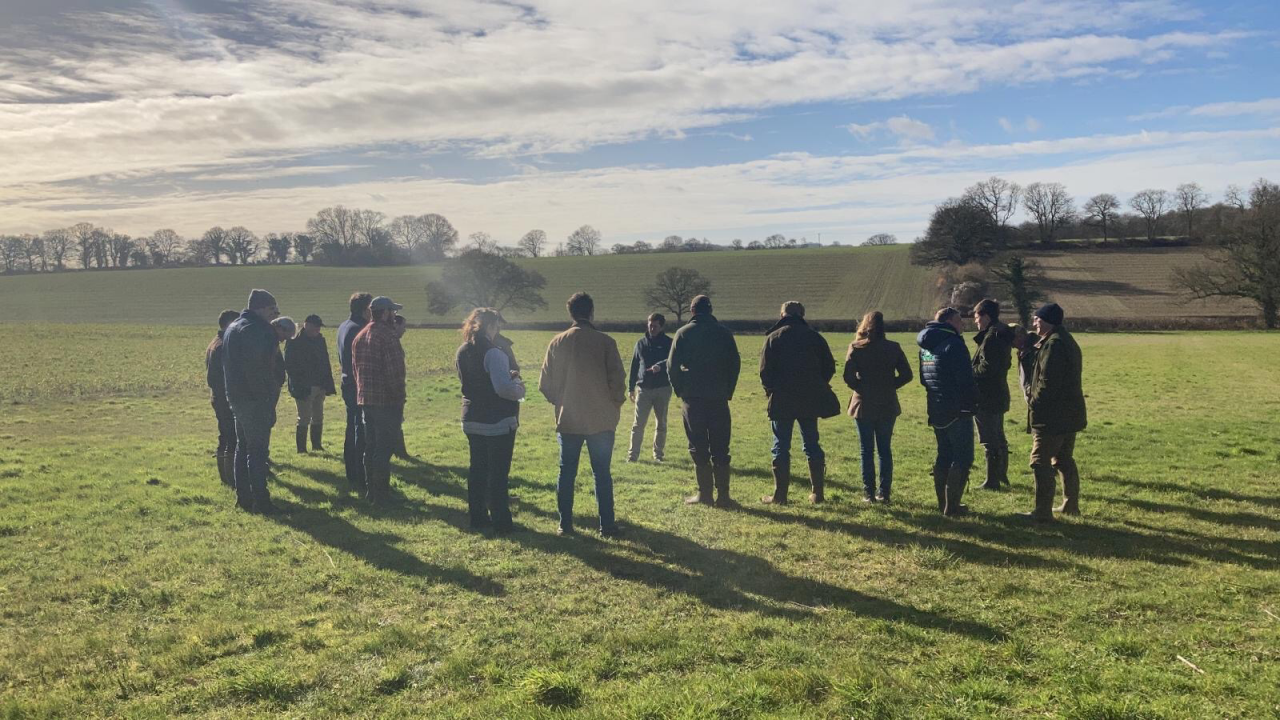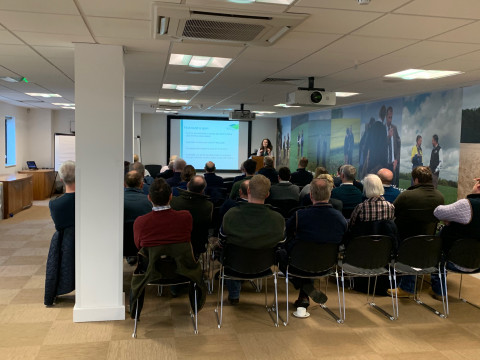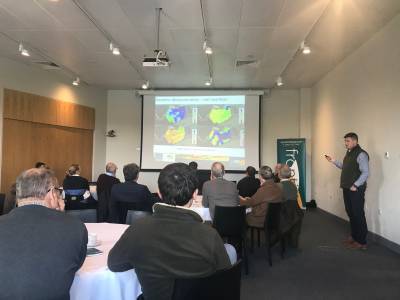Environmental Land Management blog series: 1/ We answer your questions about the scheme
While the industry appears to have well and truly embarked on the transition into a 'new era' now, a level of uncertainty remains around the new funding opportunities and ongoing changes to agri-environment schemes.
Recently, the teams from Frontier's environmental and precision farming divisions: Kings Crops and SOYL Precision held some workshops with growers across the country, with each one focussed on the Environmental Land Management (ELM) schemes and funding options linked to Countryside Stewardship. There were lots of interesting conversations at these events as well as some important considerations brought to the fore, so we thought a blog series compiling the key topics and questions could serve as a useful resource for those of you who are still unsure of what to do.
In this first blog post, we've listed some of the most common queries that were raised. It is often the case that if one person has asked a question, many others are thinking about asking it too, or are at least glad to know the answer if it's not something that's come to mind before! With that in mind, we hope you find the information outlined useful.
To make sure you're notified each time other blogs from this series are posted, you can subscribe here.
Common questions put to our team:
1. What is SFI and how does it work with ELMs?
The Sustainable Farming Incentive (SFI) is the first scheme of the ELMs to be launched. The scheme will open for applications in late June with no closing date - instead it will stay as a rolling application window.
The scheme involves standards that are applied to your land parcels. A standard includes three levels of ambition; each has a set of actions that must be completed and the levels build on from one another. If you're already doing some of the associated activities on your land, they'll count towards payment.
The three standards plus a review that will be available in the initial roll out are:
- Arable and horticultural soils
- Moorland and rough grazing
- Improved grassland soils
- Annual health and welfare review.
SFI payments will be paid in quarterly instalments, beginning from three months after each agreement starts. Agreements will last three years and amendments can be made every 12 months which makes it more flexible than previous agri-environment schemes.
2. What other schemes are available in ELMs?
ELMs includes three schemes: the Sustainable Farming Incentive (as mentioned above), Landscape Recovery and Local Nature Recovery.
Local Nature Recovery, termed the 'more ambitious successor' to Countryside Stewardship, is another scheme to become available within ELMs. It will differ from SFI as it will pay for locally targeted actions, in a similar format to Countryside Stewardship. The options included in the scheme will contain those that have been effective under Stewardship, but additionally some new options that support current aims. These cover peat and moorland restoration and the reintroduction of threatened species. The early version of the scheme is likely to open in 2023, with the whole country roll out set to commence by the end of 2024.
The final scheme in ELMs is Landscape Recovery; this is a large-scale scheme targeted towards biodiversity, water quality and net zero. Applications will be made in two rounds over the next two years, with the first application window for up to 15 landscape projects having closed on 24th May. The first round of projects will be based around recovering and re-establishing threatened species, as well as restoring England's streams and rivers.
The scheme is open to groups or individuals to apply for projects between 500 - 5,000 hectares and is expected to affect 20,000 hectares of land. £7.5m funding is available but if selected you will also have two years to find public and private funding.
3. Is Countryside Stewardship still available this year?
Stewardship is open for applications in 2022 and 2023, with the last agreements starting on the 1st January 2024. As these agreements are five years long, it is still worth looking at opportunities to assess if they could work within your business.
Increased payments
Earlier in the year, there was a payment review for Countryside Stewardship and the funding for many options was increased considerably. For those of you who currently have a live Stewardship scheme or have entered a new scheme this year, your payment later in the year will match the recent rises.
Another positive is that this year, all applications have been digitised. They can be accessed and submitted online through your Rural Payments Agency RPA account. Applications are open until July 28th for Mid Tier and Wildlife Offers, and there's a continuous rolling deadline for Capital Items.
4. I am currently in a Countryside Stewardship scheme. With the current market volatility, should I rethink my commitments?
The grain and fertiliser markets have been volatile to say the least. We've seen great swings in pricing on not just a day-to-day basis but sometimes in a matter of minutes. Ammonium nitrate started the season at around the £280/t mark, it peaked at £925/t and now sits at £790/t. This puts the majority of the 2022 season purchased AN somewhere in the region of £0.81 - £2.68 per kg of nitrogen.
Grain prices have followed a similar fashion, with London feed wheat sitting at £164/t in July 2021 before rallying up to £316/t in March 2022 – worth nearly double than what it was eight months prior.
As it stands today, London feed wheat futures for November 2023 are sat at £242/t at the time of writing. The grain prices are very attractive at the moment but they are somewhat clouded by the high fertiliser prices. As it currently stands, fertiliser prices are showing no sign of reprieve; UK Natural Gas futures are just shy of £2.52/therm for June 22.
Some of you may be considering dropping or reducing plans for Stewardship given current grain prices, but it's imperative that we don't forget the reason these certain areas of land were considered for Stewardship in the first place. Parcels of land that aren't quite as productive will remain so – making a snap decision now could prove a time consuming and costly one further down the line.
In most circumstances, we're advising growers to make the most of the current Stewardship options. Setting a percentage of your farm aside into a scheme that works well for you will help mitigate against any risks caused by the volatile markets and can provide a stable additional income for your business. Reducing any areas of less productive land by implementing Stewardship frees up more time to focus on your wider rotation too, pushing your combinable crops for maximum sustainable output.
If you have any more questions that you'd like answered about the schemes within Environmental Land Management and Countryside Stewardship, you can get in touch with your local Kings advisor or contact the team.
We'll be sharing more advice on ELMs and Stewardship as part of this blog series, with the next post focusing on how to build a baseline for your soils with the SFI arable and horticultural soil standard in mind. Subscribe here and you'll be notified once it is published.
As a subscriber, you’ll receive email alerts each time a new blog is published so you can always stay updated with the latest advice and insights from our experts







Comments